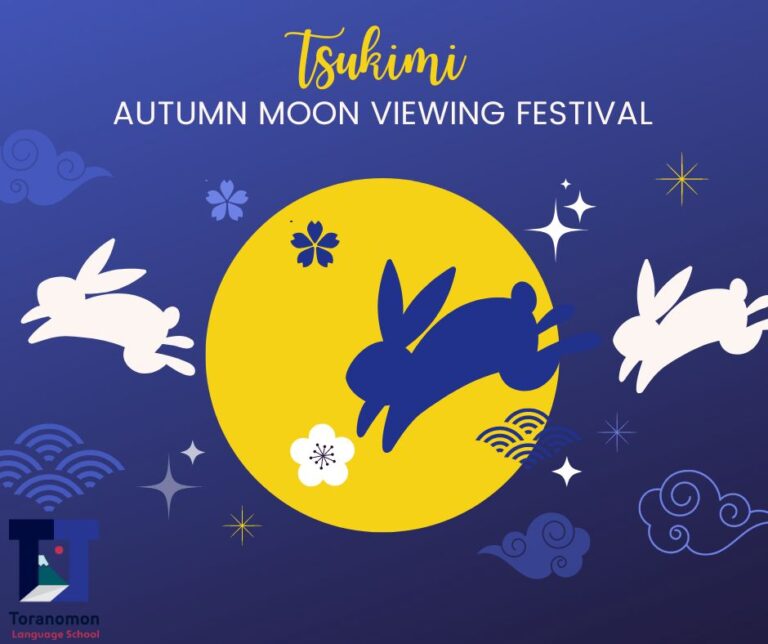September in Japan is a month of transition, with the weather quickly changing from scorching hot to rather pleasant, with the odd typhoon thrown in.
One traditional Japanese event held in September is Tsukimi, or “moon viewing festival”, celebrated annually to honour the autumn moon.
Tsukimi dates back to the Nara era (710 – 794 AD) and has been celebrated ever since. It is thought that the custom was inspired by the Chinese Mid-Autumn festival and was first celebrated by aristocrats near the end of the Nara period, who would play music and recite poetry while appreciating the awe-inspiring beauty of the moon. They would offer foods made of rice in order to express their gratitude for the year’s harvest and pray for a good harvest the following year. They would also take boats out at night to see the moon reflected onto the water.
How is it celebrated now?
These days people gather outside or on their balcony to view the moon and eat special foods to celebrate the coming of autumn. The place where people gather is called “tsukimidai”.
Japanese people also like to display Tsukimi decorations during this festival. The decorations are made from Japanese pampas grass and can be as simple as some grass in a vase, or a more elaborate design. The plumes of grass are supposed to represent the bounty of the rice harvest as they resemble rice growing in a paddy.
When is it celebrated?
On the old lunar calendar, Tsukimi was celebrated on the 15th night of each month, and the best night to observe the moon was said to be the fifteenth night of the eighth month of the lunar calendar, referred to as jugoya no tsukimi. The weather must have been a little different back then, as this date falls mid-September and was supposed to be the mid-point of autumn, which these days is more like early November.
This year (2022), Tsukimi will be held on September 10.
What foods do people eat to celebrate Tsukimi?
People eat rice dumplings called tsukimi-dango, along with seasonal foods like chestnuts and pumpkins, which are also offered to the moon as a sign of gratitude. The round, white shape of the dango is said to resemble the moon, and eating them is supposed to bring health and happiness. Udon with an egg yolk inside to represent the moon is also popular.
You may also find some rabbit themed Tsukimi snacks as in Japan, the craters on the moon are said to represent a rabbit pounding mochi. This is perhaps due to the word “mochizuki”, which means full moon but also sounds like the word for pounding mochi.
Where can you celebrate Tsukimi?
You can celebrate at home by going outside and reflecting, or you can join a public event. Tokyo Tower will hold a special event with the tower being lit up to celebrate the moon. The outer staircase leading to the main deck will be open until 10PM so that people can view the moon from a good vantage point. Tokyo Skytree will also hold an event complete with music and food stalls. Sankeien Gardens in Yokohama will be specially illuminated for the event as well for anyone wishing to venture into Kanagawa.

